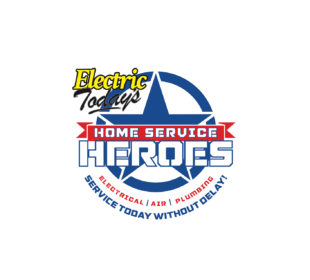If your household has children grade school age or younger, you are probably concerned about electrical safety. Teaching them basic safety rules and safeguarding outlets and other potentially hazardous connections is a good start. But one of the best ways to encourage a healthy relationship with electricity is to show them how it works. Why not involve them in some engaging electrical projects that are both fun and educational? We’ve found some easy experiments that anyone can perform at home.
Static Electricity:
These two experiments showcase how all matter is made up of atoms: protons (which hold a positive charge), neutrons (no charge), and electrons (which hold a negative charge). When the protons and electrons are balanced the atom is not charged. When you rub two items together, some electrons will move from one atom to another. This will give one item a positive charge – and the other one a negative charge. This causes the two of them to attract each other.
Separate Pepper from Salt
-
- Plastic Comb
- Shallow Dish
- Salt
- Pepper
- Put some salt and pepper in a small bowl and mix them up.
- Give your child a plastic comb and have them “charge” it statically by running it through their hair. The child who charges the comb must be the one who heads the experiment. Note: After it has been charged, the comb can’t be given to another person or it will lose the charge.
- Have them place the comb over the bowl and the pepper will be pulled to the comb through the static. Don’t hold the comb too closely or the salt will be pulled as well.
Bend Water - Have someone charge a plastic comb again. (You might have several kids take part in this experiment.)
- Have them place the comb under a faucet while a small stream of water runs over the comb.
- Watch carefully how the water reacts when it comes into contact with the comb. This reaction is the “bending” of the water.
- Similar to the salt and pepper experiment, the electrons on the comb have a negative charge. The electrons are attracted to the positive force of water.
Electric Currents:
This experiment demonstrates what materials conduct, resist or insulate an electric current. It is also a good way to show how electricity can be hazardous in certain situations.
-
-
- Battery
- Small Bulb
- Aluminum Foil (folded lengthwise and rolled up)
- A Table or Flat Surface
- Test Objects: a penny, chalk, candle, stick (or piece of wood), a key, an eraser.
-
- Take the battery, bulb, and rolled foil and place them next to each other on the chosen surface.
- Distribute the test objects among the various kids involved in the experiment.
- Explain the experiment, which is a simple demonstration of how some materials can conduct electricity.
- Have the first child take one of their objects and place it between the battery and the bulb screw thread (making sure that they all touch). Then have them touch the foil to the bulb screw thread as well.
- If the center object conducts electricity, the light bulb will light up when the aluminum foil touches the screw thread.
- Go through the various objects, noting what the object is made of and why it is (or isn’t) a good conductor. Metals, graphite and anything living is ideal conductors. Plastic, glass, and rubber are ideal insulators – materials that do not allow electricity to pass through.
- Older kids might want to take notes on the experiment, which is a good way for them to remember the results.
-
Showing your kids the way electricity works is a great way to get them involved in science – and spread the word on electrical safety. Another great way to demonstrate the power and usefulness of electricity is to invite them into the conversation the next time you need help with an electrical problem. The next time you have a wiring, lighting, or general electric need, contact the professional electricians at Home Service Heroes. We’ll go out of our way to explain any issues to you – and your kids. Call us at (813) 696-3398 and we’ll schedule an appointment today!
